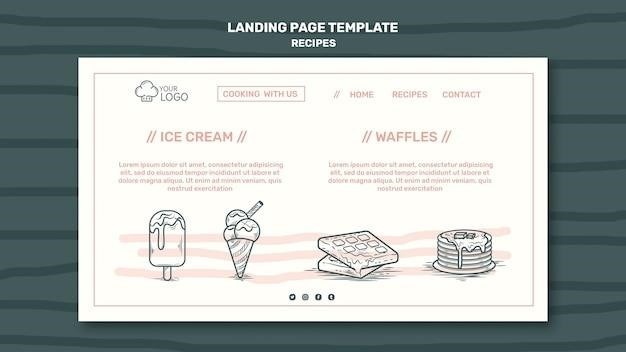Hamilton Beach Ice Cream Maker⁚ A Comprehensive Guide
This guide provides a complete overview of using your Hamilton Beach ice cream maker. From locating your model’s manual to troubleshooting common issues and discovering exciting recipe ideas, we’ll cover everything you need to know to create delicious homemade ice cream, frozen yogurt, and more. Explore helpful tips and techniques to ensure your ice cream-making journey is a success. Learn about proper cleaning, storage, and maintenance to extend the life of your appliance.
Finding Your Model’s Manual
Locating your Hamilton Beach ice cream maker’s instruction manual is crucial for safe and effective operation. If you purchased your appliance recently, check the box for the included paperwork. Many retailers also provide digital copies of manuals on their websites; search online using your model number (often found on a sticker on the appliance itself). Hamilton Beach’s official website is an excellent resource; their support section typically offers downloadable manuals for various models. If you’re still unable to find it, contact Hamilton Beach’s customer service directly – they can assist you in obtaining a replacement manual or provide necessary instructions. Remember, consulting the manual is vital for understanding specific features and safety precautions for your particular model, ensuring optimal performance and a delightful ice cream-making experience.
Essential Safety Precautions
Prior to operating your Hamilton Beach ice cream maker, carefully review the safety precautions outlined in your user manual. Always ensure the appliance is placed on a stable, level surface away from water sources and heat. Never operate the machine with a damaged cord or plug; replace immediately if necessary. Always unplug the ice cream maker before cleaning or performing any maintenance. Avoid touching moving parts during operation. Exercise caution when handling the frozen bowl, as it will be extremely cold. Never immerse the motor housing in water or other liquids. Supervise children in the vicinity of the appliance. Ensure the power supply matches the voltage specified on the ice cream maker’s label. Do not overload the machine with excessive ingredients; adhere to the recommended recipe quantities. If you experience any unusual sounds, smells, or malfunctions, immediately cease operation and unplug the device. Always prioritize safety to prevent accidents and ensure a positive ice cream-making experience.

Understanding Your Machine’s Parts
Familiarize yourself with your Hamilton Beach ice cream maker’s components before starting. The main components typically include the motor base, the freezer bowl (often a separate, pre-freezing component), the dasher (a paddle that mixes the ingredients), and the lid with its ingredient opening. The motor base houses the motor and power switch. The freezer bowl is a crucial part, requiring sufficient freezing time before use. Its cold temperature is essential for the ice cream freezing process. The dasher is the internal paddle that ensures even mixing and prevents ice crystals from forming. The lid secures the freezer bowl and features an opening to add ingredients during operation. Some models may include additional features like a timer or varying speed settings. Consult your specific model’s user manual for a detailed diagram and descriptions of each component. Understanding each part’s function will aid you in the efficient and safe operation of your ice cream maker, ensuring optimal results.
Making the Most of Your Ice Cream Maker
To optimize your Hamilton Beach ice cream maker’s performance, ensure the freezer bowl is adequately frozen before starting; The freezing time varies depending on your freezer’s temperature; colder freezers require less time. A fully frozen bowl is crucial for achieving the desired creamy texture. Before adding your ice cream mixture, ensure it’s properly chilled. This helps the freezing process and prevents the ice cream from becoming icy. Don’t overfill the bowl; leave enough space for expansion during churning. The optimal amount varies depending on the model; check your user manual for specifications. Using high-quality ingredients will significantly improve the flavor and texture of your homemade ice cream. Fresh, high-fat dairy products are recommended for a richer, creamier result. Experiment with different recipes and flavors to personalize your ice cream creations. Proper cleaning and maintenance after each use will keep your ice cream maker in top condition for years to come. Refer to your user manual for detailed cleaning instructions. Following these tips will help you produce consistently delicious results.
Step-by-Step Ice Cream Making
Begin by thoroughly freezing the ice cream maker’s bowl according to the manufacturer’s instructions. This crucial step ensures optimal freezing during the churning process. Next, prepare your chosen ice cream recipe, ensuring all ingredients are well combined and chilled. This chilled mixture contributes to a smoother, faster freezing process. Once the bowl is frozen and the mixture is chilled, carefully assemble the ice cream maker according to the instructions in your user manual. Avoid forcing any parts; ensure a proper fit for optimal function. Pour the chilled mixture into the prepared ice cream maker, leaving some space for expansion. Turn on the machine and allow it to churn the mixture until it reaches your desired consistency. The churning time may vary depending on your recipe and the ambient temperature. During the churning process, avoid opening the lid frequently, as this can disrupt the freezing process and affect the final texture. Once the ice cream reaches the desired consistency, carefully remove the ice cream from the bowl and transfer it to an airtight container for storage. Enjoy your homemade ice cream immediately or store it in the freezer for later.
Proper Ice Cream Storage
Proper storage is key to maintaining the quality and deliciousness of your homemade ice cream. Immediately after churning, transfer your ice cream from the ice cream maker bowl to an airtight container. This prevents ice crystals from forming and preserves the smooth texture. Choose a container that is freezer-safe and leaves minimal headspace to reduce air exposure. Air exposure can lead to freezer burn, altering the flavor and texture of your ice cream. For optimal storage, use a rigid container, rather than a flexible one, to minimize the risk of the ice cream being crushed or deformed while frozen. Label the container with the date of making to ensure you use your ice cream within a reasonable timeframe. Most homemade ice creams are best enjoyed within a couple of weeks for optimal flavor and texture. Avoid storing your ice cream in the warmest part of the freezer, as this area is subject to greater temperature fluctuations. If you notice ice crystals forming, it’s a sign that the ice cream needs to be consumed sooner rather than later. Proper storage ensures your hard work and delicious homemade ice cream remains enjoyable for as long as possible.
Cleaning and Maintenance
Cleaning your Hamilton Beach ice cream maker promptly after each use is crucial for maintaining its performance and hygiene. Before cleaning, always ensure the ice cream maker is completely unplugged from the power source. Never immerse the motor base in water or any other liquid; this could cause irreparable damage. For the removable parts, such as the bowl and dasher, refer to your specific model’s instruction manual for detailed cleaning instructions, but generally, hand washing with warm, soapy water is recommended. Avoid using abrasive cleaners or scouring pads, as these can scratch the surfaces. Thoroughly rinse all parts and dry them completely before reassembling. The exterior of the ice cream maker can usually be wiped clean with a damp cloth. Regularly check the power cord for any signs of damage, such as fraying or cracks, and replace it immediately if necessary. Proper cleaning and maintenance will extend the lifespan of your Hamilton Beach ice cream maker, ensuring many years of delicious homemade frozen treats.
Troubleshooting Common Issues
Encountering problems with your Hamilton Beach ice cream maker? Let’s address some common issues. If your ice cream is icy or not freezing properly, ensure the freezer bowl has been frozen for the recommended time (usually 8-24 hours depending on your freezer’s temperature). Insufficient freezing time is a frequent culprit. Another common issue is a motor that doesn’t start. Check the power cord connection and ensure the unit is properly plugged in. If the motor is still unresponsive, consult your instruction manual or contact Hamilton Beach customer support. If your ice cream is too soft, try reducing the amount of liquid in your recipe or increasing the freezing time. If your ice cream is too hard, consider adding a bit more liquid or using a lower-fat base. Always use the correct amount of ice cream mixture; overfilling can hinder the freezing process. Remember to refer to your user manual for specific troubleshooting advice for your model. If the problem persists, don’t hesitate to reach out to Hamilton Beach for assistance.
Recipe Ideas and Inspiration
Unlock a world of frozen dessert possibilities with your Hamilton Beach ice cream maker! Beyond classic vanilla, explore countless flavor combinations. Start with simple recipes like strawberry, chocolate, or mint chip, easily adaptable to your preferences. For adventurous palates, try unique flavors such as salted caramel, coffee oreo, or even a refreshing mango sorbet. Don’t be afraid to experiment with different mix-ins⁚ nuts, chocolate chips, cookies, fruit pieces, or candies can add exciting textures and tastes. Many online resources offer Hamilton Beach-compatible recipes, including the official Hamilton Beach website. Explore blogs and recipe websites for inspiration, adapting recipes to your preferred sweetness and richness. Consider using high-quality ingredients for the best results. Remember to follow the recommended recipe proportions to ensure optimal freezing and consistency. The possibilities are endless—let your creativity guide you to crafting unforgettable frozen treats!
Freezing Bowl Preparation Time
Proper freezing of the bowl is crucial for successful ice cream making. The time required varies significantly based on your freezer’s temperature and the bowl’s initial temperature. A colder freezer (-22ºF or -30ºC) will generally require 8-9 hours, while a warmer freezer (5ºF or -15ºC) may need 24 hours or more. Always check your specific Hamilton Beach ice cream maker’s manual for recommended freezing times. Before placing the bowl in the freezer, ensure it’s completely dry to prevent ice buildup. Avoid placing it near the freezer’s vents or other items that might impede efficient cooling. For optimal results, place the bowl in the freezer at least 12 hours in advance; however, checking the bowl’s temperature is recommended, and some models may provide indicators to assist. If your ice cream mixture doesn’t freeze properly, the bowl may not have been frozen sufficiently. Remember, a correctly frozen bowl is vital for achieving the desired creamy consistency. Never rush the freezing process, as it’s key to the success of your frozen dessert.
Where to Find Additional Support

If you require further assistance beyond this guide, several resources are available. Firstly, consult your Hamilton Beach ice cream maker’s user manual. This document contains detailed instructions, troubleshooting tips, and safety information specific to your model. The manual often includes contact information for customer support, allowing you to directly address any questions or concerns. Secondly, explore Hamilton Beach’s official website. Their website typically features a comprehensive FAQ section, where you can search for answers to common queries. Many manufacturers also provide online support forums or communities where users can share experiences, tips, and troubleshoot problems together. Additionally, you can contact Hamilton Beach customer support directly via phone or email, as their contact details are usually found on their website or in your manual. Online retailers where you purchased the machine may also offer support channels. Remember to have your model number readily available when seeking assistance.